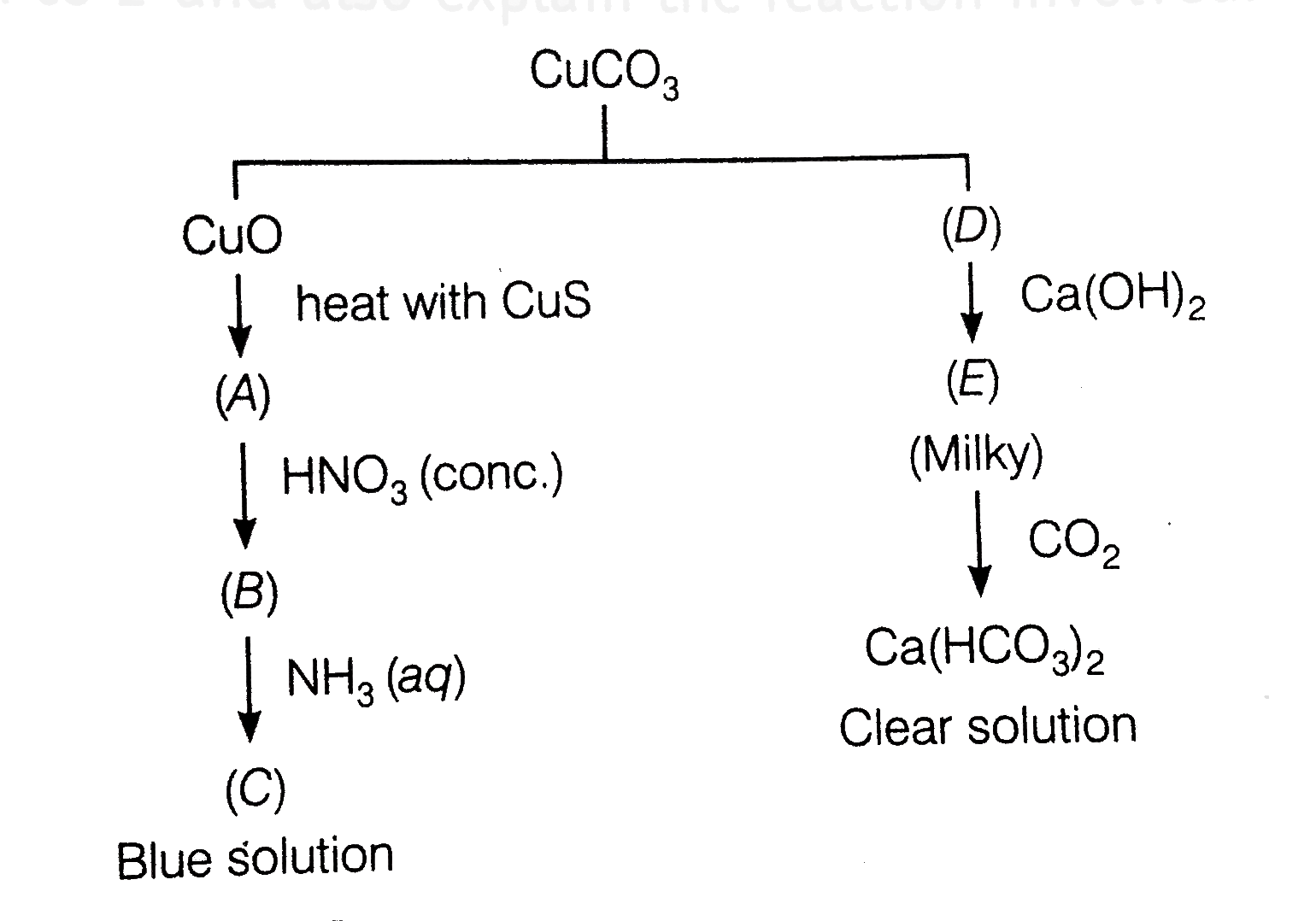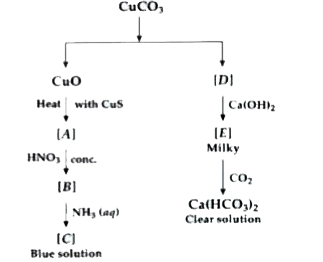Decolorises iodine solution. Identify (A) to (D) and give the reaction involved in each case.
These observations suggest that the substance (A) is sulphur (S), the gas (B) is nitrogen dioxide , compound (C) is sodium thiosulphute and the gase (D) is sulphur dioxide . The reaction are as follows :
Topper's Solved these Questions
- P-BLOCK ELEMENTSBook:CHHAYA PUBLICATIONChapter:P-BLOCK ELEMENTSExercise:SLOVED WBCHSE SCANNER
Explore 31 Videos
- P-BLOCK ELEMENTSBook:CHHAYA PUBLICATIONChapter:P-BLOCK ELEMENTSExercise:SOLVED CBSE SCANNER
Explore 102 Videos
- P-BLOCK ELEMENTSBook:CHHAYA PUBLICATIONChapter:P-BLOCK ELEMENTSExercise:VERY SHORT ANSWER TYPES (VSA )
Explore 129 Videos
- ORGANIC CHEMISTRY : BASIC PRINCIPLES AND TECHNIQUES Book:CHHAYA PUBLICATIONChapter:ORGANIC CHEMISTRY : BASIC PRINCIPLES AND TECHNIQUES Exercise:WARM UP EXERICSE
Explore 132 Videos
- POLYMERS Book:CHHAYA PUBLICATIONChapter:POLYMERS Exercise:SOVLED CBSE SCANNER
Explore 18 Videos
Similar Questions
Knowledge Check
Identify the chemical reaction involved in water gas shift reaction:
AC+H2OΔ−−−−−→NiCO+H2BCO+H2OΔ−−−−−→catalystCO2+H2CCnH2n+2+nH2OΔ−−−−−→NinCO
+(2n−1)H2DC+O2→CO2(g)
Identify A to E and also explain the reaction involved.

View SolutionAn orange solid (A) on heating gave a green residue (B), colourless gas (C) and water vapour. The dry gas (C) on passing over heated magnesium gave a white solid (D).(D) on reaction with water have a gas (E) which formed dense white fumes with HCl. Indentify (A) to (E) and give the reactions.
View Solution(E) dissolves in aqueous solution of ammonia giving a colourless solution of (F). Identify (A) to (F) and give chemical equations for reactions involved in steps (i) to (v).
View SolutionPyrolustie on heating with KOH in the presence of air gives dark green compound (A).The solution of (A) on treatment with H2SO4 gives a purple coloured compound (B) which gives the following reactions :
(i) Alkaline solution of B on reaction with KI changes it into compound (C ).
(ii) The color of the compound (B) disappears on treatment with acidic soluiont of FeSO4.
(iii) On reaction with conc. H2SO4 compound (B) gives another compound (D) which can decompose to produce compound (E ) along with oxygen gas. Identify compounds (A) to (E ) and write balanced chemical equation involved in each case.
View SolutionA black mineral (A) on heating in presence of air gives a gas (B). The mineral (A) on reaction with dilute H2SO4 gives a gas (C) and a solution of a compound (D) on passing the gas (C) into an aqueous solution of (B), a white turbidity is obtained. The aqueous solution of (D) on reaction with potassium ferricyanide gives a blue compound (E). Identify (A) to (E) and give chemical equations for the reaction involved.
View SolutionA black mineral (A) on heating in presence of air gives a gas (B). The mineral (A) on reaction with dilute H2SO4 gives a gas (C) and a solution of a compound (D) on passing the gas (C) into an aqueous solution of (B), a white turbidity is obtained. The aqueous solution of (D) on reaction with potassium ferricyanide gives a blue compound (E). Identify (A) to (E) and give chemical equations for the reaction involved.
View SolutionGive the Reaction of Iodine with ozone
View Solution

